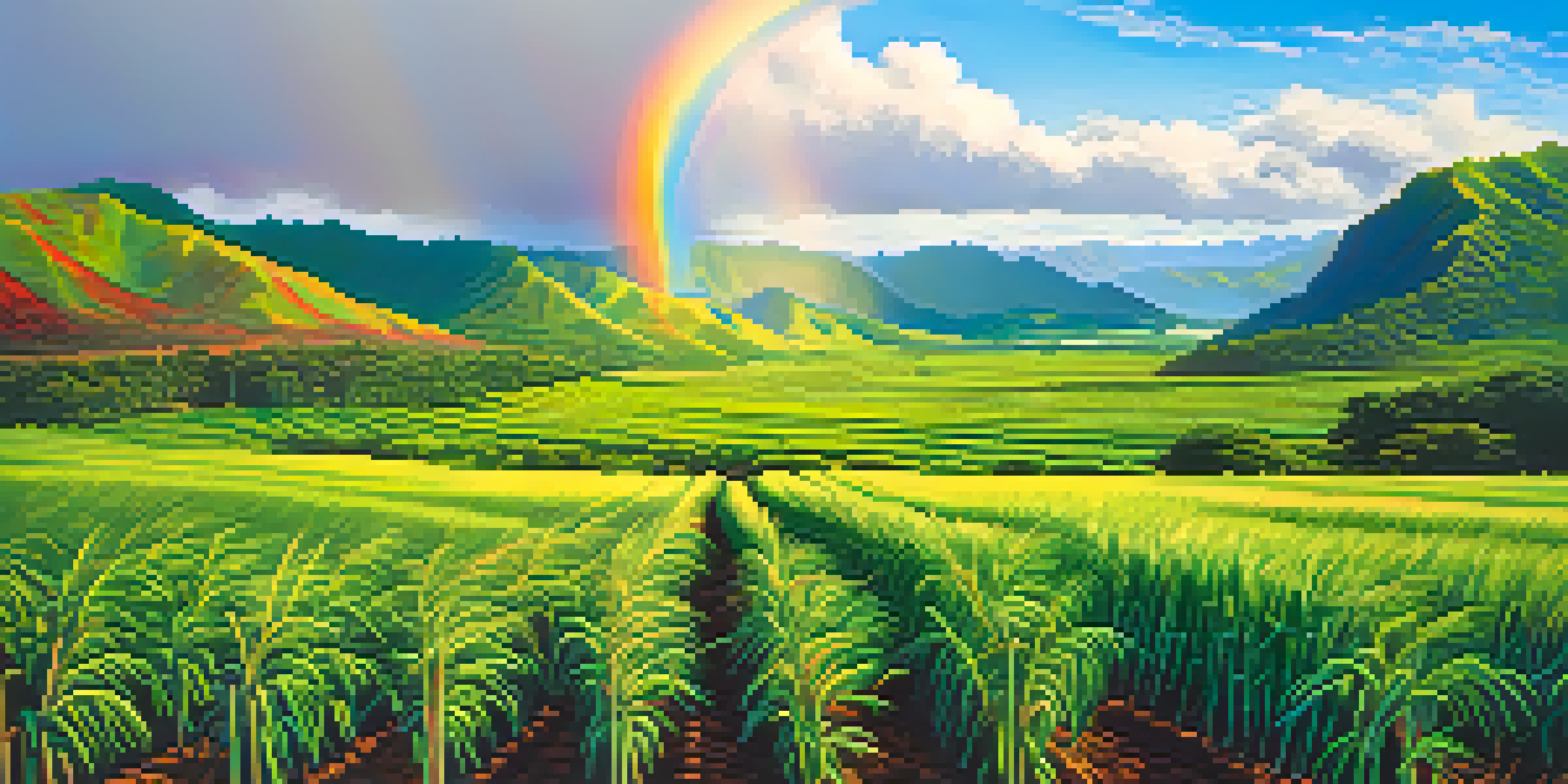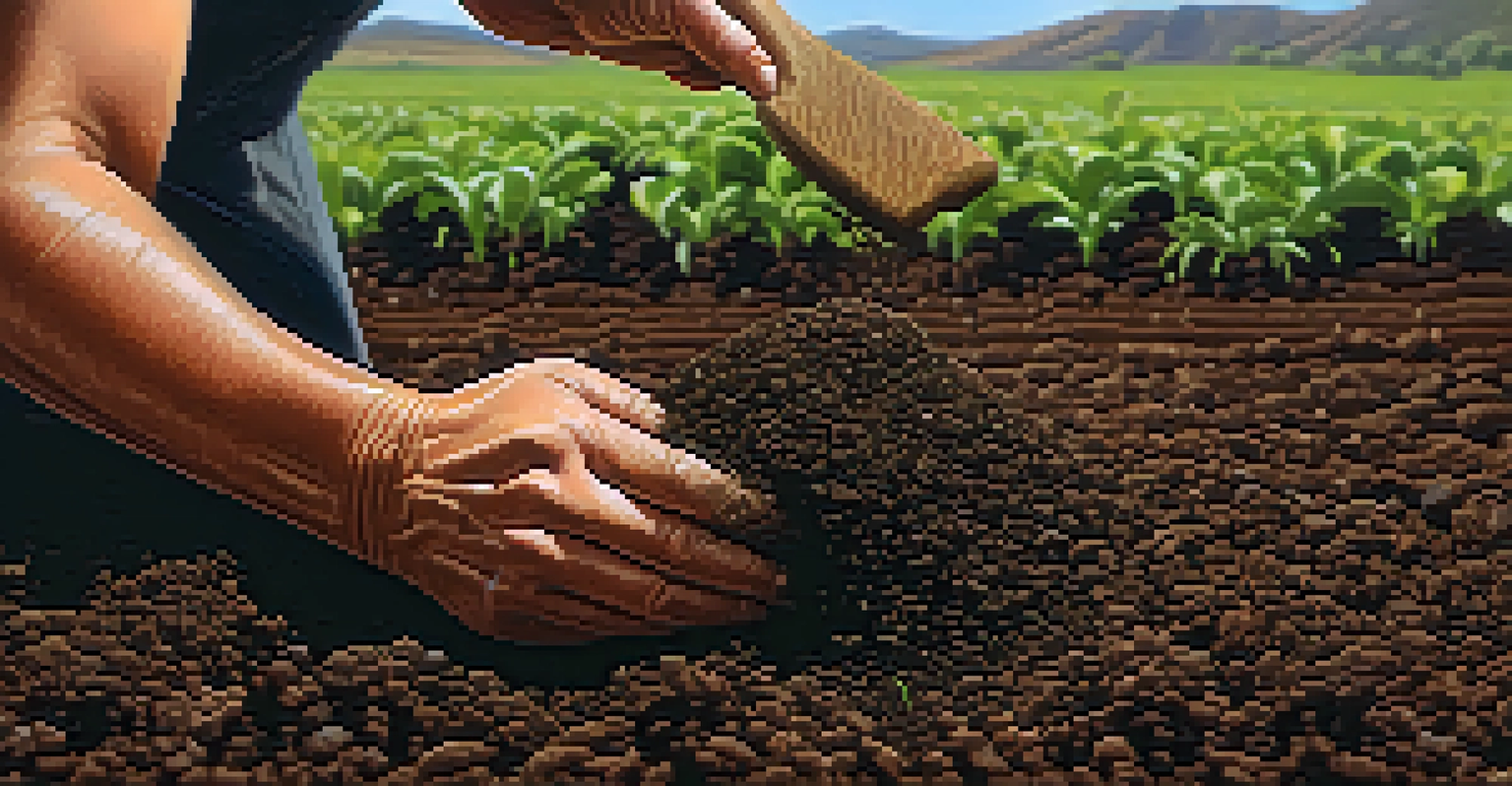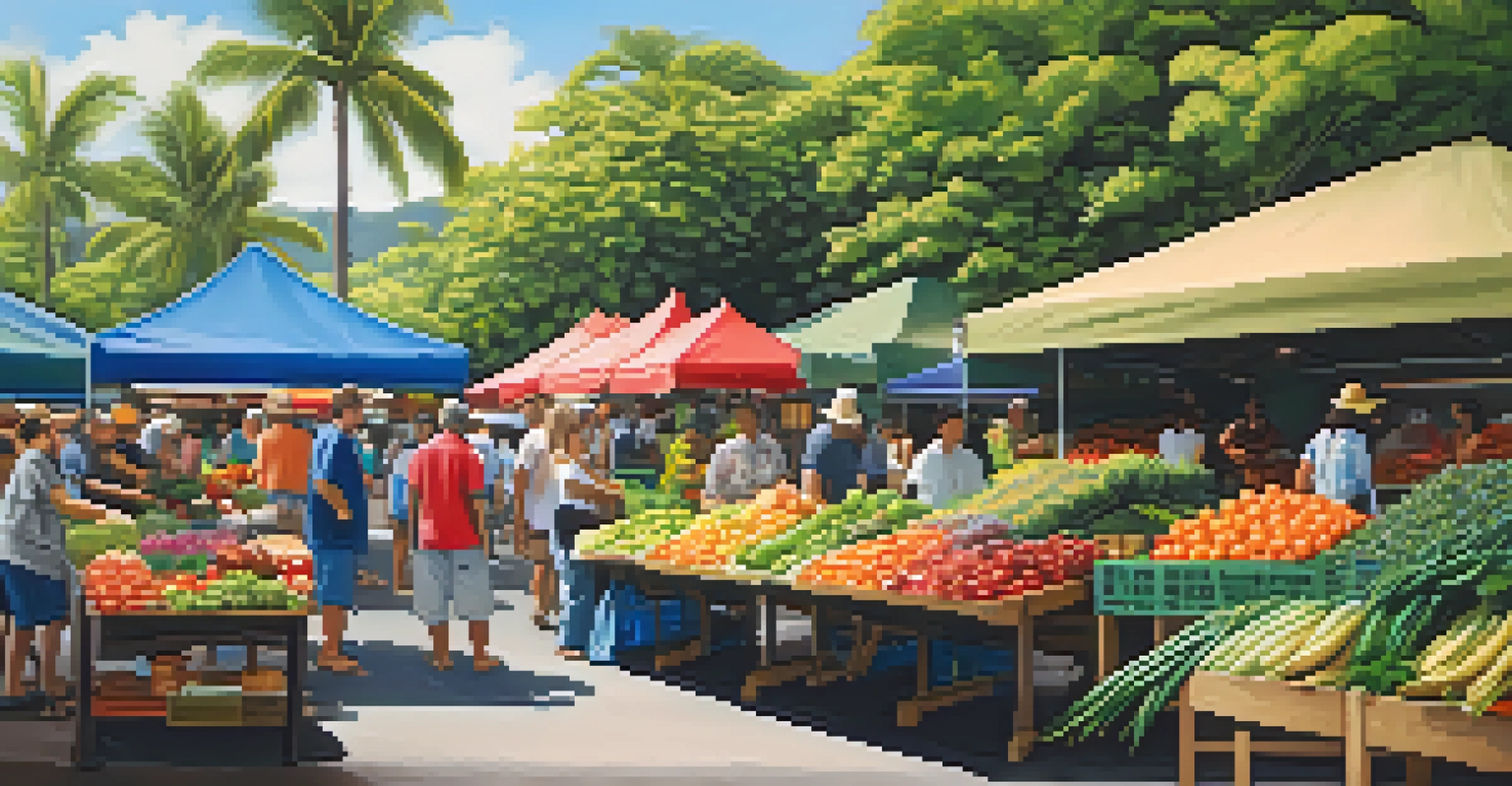Challenges Facing Hawaii's Agriculture and Economic Growth

Climate Change: A Growing Concern for Hawaii's Farmers
Hawaii's unique climate is both a blessing and a challenge for agriculture. The rising temperatures and unpredictable rainfall patterns are affecting crop yields across the islands. Farmers are increasingly finding it difficult to predict planting and harvesting times, leading to potential shortages and increased prices.
The land is our home, and we must take care of it if we hope to sustain ourselves and future generations.
For instance, sugarcane and coffee farmers are experiencing shifts in the growing seasons, which can disrupt their operations. These changes not only threaten individual crops but also the overall agricultural landscape of Hawaii. As farmers grapple with these climatic shifts, adaptation becomes crucial to maintain productivity.
Moreover, the risk of extreme weather events, such as hurricanes and droughts, further complicates the situation. These unpredictable occurrences can devastate crops overnight, leaving farmers with significant losses. As a result, addressing climate change is not just an environmental issue; it's central to the economic stability of Hawaii's agricultural sector.
Soil Degradation: The Silent Threat to Crop Production
Soil health is vital for any agricultural system, yet Hawaii faces significant challenges in this area. Intensive farming practices, coupled with invasive species, have led to soil degradation, impacting crop productivity. Farmers are noticing reduced yields and increased difficulty in maintaining soil fertility, which can threaten long-term sustainability.

To combat this, many local farmers are exploring sustainable practices like crop rotation and organic farming. These methods not only help in rejuvenating the soil but also promote biodiversity. However, transitioning to these sustainable practices can be costly and may require a steep learning curve for farmers accustomed to traditional methods.
Climate Change Threatens Agriculture
Rising temperatures and unpredictable rainfall are disrupting crop yields and threatening Hawaii's agricultural stability.
The need for education and resources in sustainable agriculture is more pressing than ever. By investing in soil health and supporting farmers through this transition, Hawaii can protect its agricultural future while enhancing its economic resilience.
Economic Dependency: The Impact of Limited Crop Diversity
Hawaii's agricultural sector heavily relies on a few key crops, creating economic vulnerabilities. The state's economy is largely dependent on products like sugarcane, coffee, and macadamia nuts, leaving it exposed to market fluctuations. When demand drops or prices fall, the effects ripple through the local economy, affecting jobs and livelihoods.
In Hawaii, agriculture is not just about crops; it's about our culture, our identity, and our future.
Diversifying crop production could be a solution to this challenge. By introducing a broader range of crops, farmers could reduce their risk and increase resilience against market changes. However, such diversification requires investment and support from both the government and private sectors to be successful.
Encouraging farmers to explore new crops not only bolsters economic stability but also promotes food security. By cultivating a variety of produce, Hawaii could reduce its reliance on imports and foster a more self-sufficient agricultural landscape.
Labor Shortages: A Growing Issue for Hawaii's Farmers
Labor shortages pose a significant challenge for Hawaii's agricultural sector. Many farmers struggle to find enough workers to harvest crops, particularly during peak seasons. This shortage can lead to crops being left unharvested, resulting in financial losses and wasted resources.
The reasons behind this labor shortage are multifaceted. Many local residents seek work in other industries that offer better pay and working conditions. Additionally, the agricultural sector relies heavily on seasonal workers, which can be unpredictable and often insufficient to meet demand.
Soil Health is Essential for Farming
Soil degradation from intensive farming practices poses a significant risk to long-term crop productivity in Hawaii.
To address this issue, farmers are looking for innovative solutions, such as automation and mechanization. However, this transition requires investment and training, which can be a barrier for small-scale farmers. Finding a balance between traditional methods and modern technology will be key to ensuring the workforce needed for Hawaii's agricultural success.
Invasive Species: A Threat to Biodiversity and Crops
Invasive species pose a significant threat to Hawaii's unique ecosystems and agricultural productivity. These non-native plants and pests can outcompete local flora, disrupting the delicate balance of the islands' biodiversity. For farmers, this means dealing with pests that can decimate crops and drive up costs for pest control.
The introduction of invasive species is often linked to human activity, whether through tourism, trade, or agricultural practices. For example, the rapid spread of the coffee berry borer beetle has devastated coffee farms across the state, leading to decreased yields and increased expenses for farmers.
Effective management of invasive species is crucial for protecting both agriculture and the environment. This includes implementing stricter regulations and promoting awareness among the community. By working together, residents can help safeguard Hawaii's unique ecosystems, which in turn supports the agricultural sector.
Access to Markets: Overcoming Geographical Challenges
Hawaii's geographical isolation presents unique challenges for farmers trying to access markets. With the majority of produce being transported to the mainland, shipping costs can be prohibitive. This often results in higher prices for consumers and reduced profits for local farmers.
The distance also complicates logistics, making it difficult for farmers to compete with mainland suppliers who can offer lower prices due to economies of scale. This situation can discourage new farmers from entering the market and limit the growth potential of existing operations.
Economic Diversification is Crucial
Hawaii's heavy reliance on a few key crops makes its economy vulnerable, highlighting the need for crop diversification.
To improve access to markets, local initiatives are being developed to support farmers. Farmers' markets and community-supported agriculture programs provide avenues for direct sales, creating a more sustainable economic model. By fostering local consumption, Hawaii can build a stronger agricultural economy that benefits both farmers and consumers.
Government Policies: Navigating Support and Regulation
Government policies play a crucial role in shaping the agricultural landscape in Hawaii. While there are programs designed to support farmers, navigating the regulatory environment can be a challenge. Many farmers find it difficult to access funding or assistance due to complex application processes and eligibility criteria.
Moreover, regulations aimed at protecting the environment can sometimes conflict with agricultural practices. Farmers must balance sustainable practices with compliance to ensure they can maintain productivity while adhering to legal requirements. This can create frustration and uncertainty within the farming community.

Advocating for clearer policies and streamlined processes can significantly benefit Hawaii's agriculture. By fostering communication between farmers and policymakers, stakeholders can work together to create a supportive environment that promotes economic growth while preserving the unique ecosystems of the islands.
Future Outlook: Opportunities Amidst Challenges
Despite the numerous challenges facing agriculture in Hawaii, there are also opportunities for growth and innovation. Many farmers are beginning to embrace sustainable practices, which not only enhance productivity but also contribute to environmental conservation. This shift represents a growing awareness of the need for a more resilient agricultural sector.
Additionally, the rise of agritourism is providing new avenues for farmers to diversify their income. By inviting visitors to experience farm life, local producers can create additional revenue streams while promoting their crops. This trend not only supports farmers but also enriches the local economy through tourism.
As Hawaii's agricultural community continues to adapt and evolve, collaboration among farmers, government, and consumers will be essential. By coming together, stakeholders can create a thriving agricultural landscape that supports economic growth and preserves the islands' unique environment for future generations.